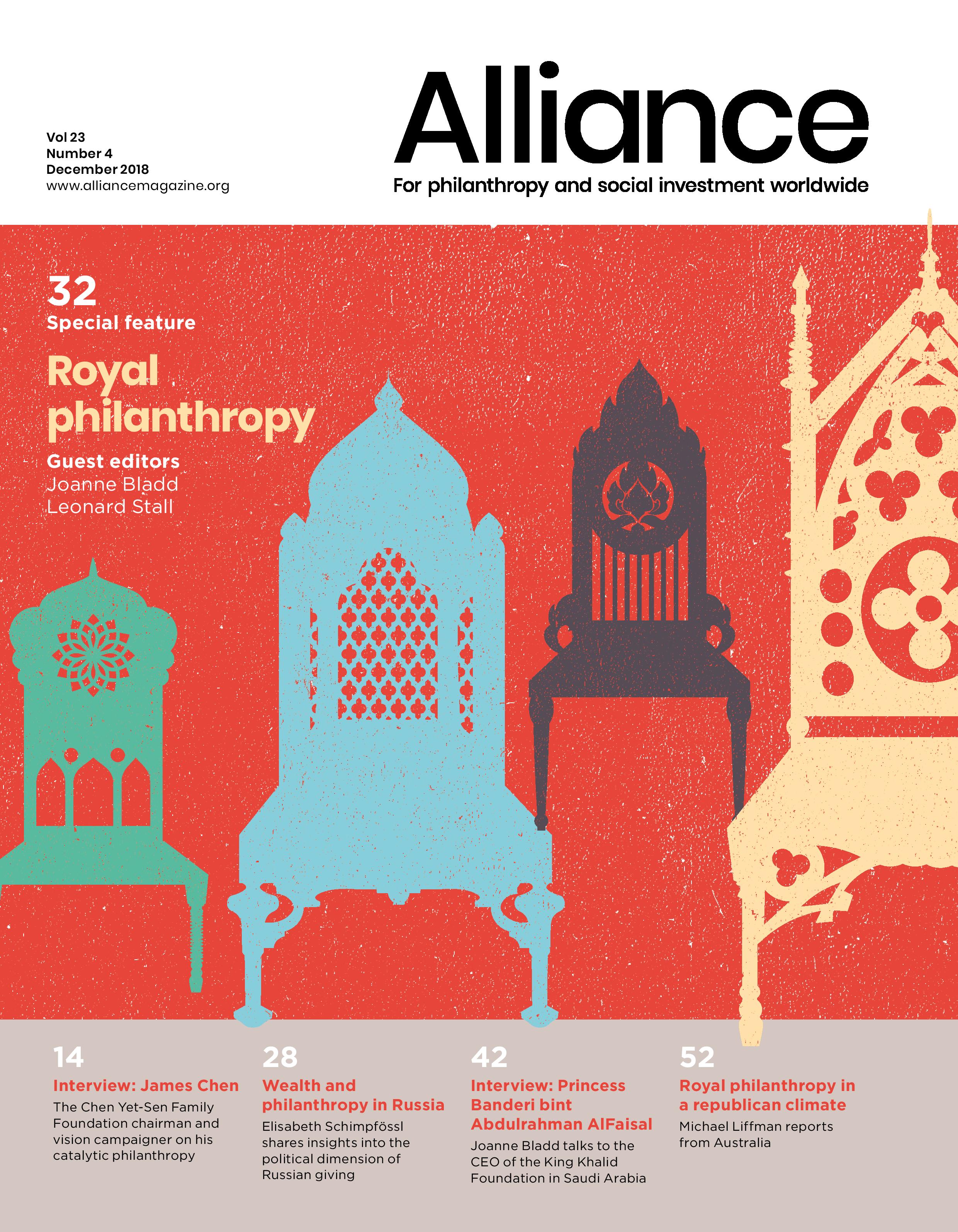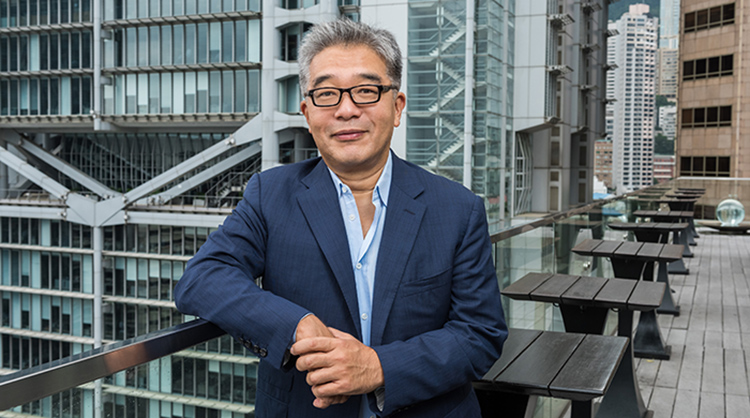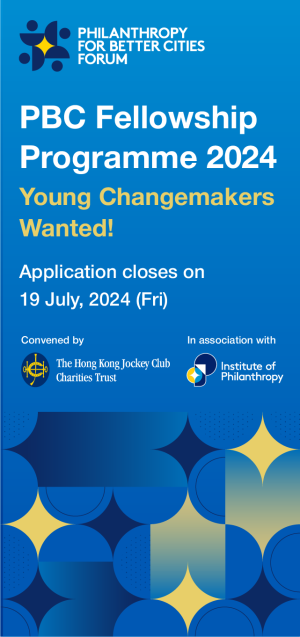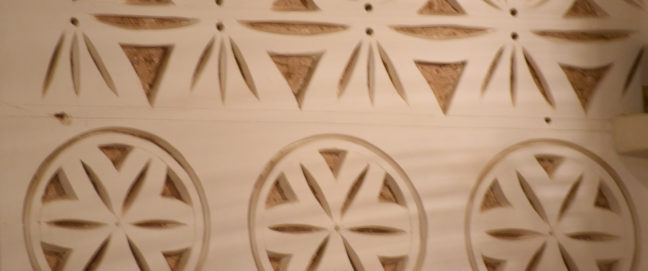James Chen is chair of Wahum Holdings in Nigeria and the Chen Yet-Sen Family Foundation, but he is probably best known as founder of the Clearly campaign to eradicate preventable poor vision globally. The areas of his philanthropic work might appear mainstream – education and healthcare – and the resources at his disposal modest, but the development of what he calls domain expertise and the catalytic use of those resources has had a remarkable impact. He explains his approach to Charles Keidan and spells out why correcting eyesight should be central to the world’s Sustainable Development Goals.
The catalytic philanthropist
What has changed since Alliance interviewed you a decade ago?
Our work has evolved. But the thing that has stayed the same is my belief in developing domain expertise – essentially a deep understanding of the issues we’re working on. There are roadblocks along the way and unless you’ve actually gone through them or failed and learned from the failure, you don’t get the depth of understanding. For our foundation, it’s around the issue of school libraries and early childhood literacy. For me personally, it’s this journey on vision. On both, the past ten years has deepened our understanding and made us more effective. Most important is the willingness to take the right risk. To me, that’s where most philanthropists fall over. Because if you don’t understand an issue deeply enough, you don’t take the really important risk because of a fear of failure.
Can you give an example of taking the right risks in the context of the Chen Yet-Sen Family Foundation’s work on development of public libraries?
We’ve funded over 100 library initiatives in China but we also hold conferences. At the first conference, a school principal from China said to me, ‘I really get it and I think what you’re launching is really good. Will you fund me to try some of this stuff?’. We did. She started with one school in a city called Hefei, and more than ten years later, it’s in 26 schools.
I think it’s fair to say that on the issue of school libraries in China, we are the go-to resource because of the domain expertise we now have – the ability for us to ask the right questions and to be able very quickly to decide whether something is really innovative or not.
What do you do in each school?
We started with library resources, but now it’s actually developed into a culture of reading. We’ve got what’s called the Stone Soup Reading Alliance and all 26 schools are part of it. Lots of that development was trial and error, but the amazing thing is that this local school principal has stuck with it, has adapted and implemented the things that she was learning from the resources we brought to bear and she’s replicated it in those schools. They’re actually building brand new schools where the library is at the centre of the school both literally and culturally. This allows children to make the best use of these resources and encourages a reading culture.
The principal now is a district education bureau official and people like her are the real heroes – they actually did it. The role the foundation played is that we gave them some money, but it was more about helping them gather and harness the right kind of intellectual resources.
It’s interesting to see a philanthropist, rather than the state, changing a culture, in this case a culture of reading, in a country like China. I presume you worked with the government to make that happen. How did that relationship work?
Being a philanthropist and particularly someone from outside the country, to be effective and to be able to scale, you really need to collaborate with local champions. They are the only ones who can figure out how to work within the system to make the changes necessary. In the case of education in China, you have the national curriculum and it’s very stringent. Within that, how do you carve out the spaces you need to implement these reading programmes? There’s no way we could do that from the outside. But because they understand it, they chip away and figure out how to make the time and the capacity. We had the same experience when working on vision in Rwanda, where again we came in with ideas and funding, but it really took the government of Rwanda to make it work. The health minister, Dr Agnes Binagwaho, was my local champion – and she’s the one who really made it happen.
I understand that you’ve undergone a shift in thinking from your earlier vision of ‘patient philanthropy’ to ‘catalytic philanthropy’. Is it through these champions that you’ve found ways to catalyse a state bureaucracy to effect change?
I think patient philanthropy still holds because these issues are so difficult that it takes a long time to understand deeply where the challenges are and how you can overcome them. But once you get there, once you have the domain expertise, that’s where you can be catalytic. Our foundation’s budget is $1 million a year, but over the 14 or 15 years we’ve been in existence, we’ve only had two years where we could actually spend the entire allocation. I always tell my directors and the team, I don’t need them to spend all that budget. I’m much more interested in impact. And even though we’re such a tiny foundation, we punch above our weight. I think it’s fair to say that on the issue of school libraries in China, we are the go-to resource because of the domain expertise we now have – the ability for us to ask the right questions and to be able very quickly to decide whether something is really innovative or not.
What was the inspiration for the foundation’s focus on school libraries? Was it the work of your late father after whom the foundation was named, or did you just see this was an issue that needed to be tackled in mainland China?
In my father’s era, the foundation funded school building because China was still very poor. When it was my turn to lead the foundation, I felt the government was getting rich – they could build and we needed to change the focus to tackling the software side. On a visit to a primary school that my dad had built, they showed me the multimedia centre – this is a primary school in rural China and they had a multimedia centre! – so I said, ‘show me the library’. We climbed four flights of stairs, last door, unlocked the door, we went in and the shelves were half bare. It’s clear nobody was using this library. That was where the idea came from. The first library we did, we gave the school the parameters of buying 500 books, chosen not just by the teachers but by students and parents. When those 500 books came in, the library that was previously underused had kids lining up outside to borrow them. That’s when the lightbulb moment happened: ‘Oh my god – if this is happening in this school, this is a generalised issue.’ What we promote is diversity of topics in order to help the children develop this love of reading. Once they have that, they can explore and work out for themselves what areas they like, rather than saying ‘this is good for you, so you read this’. Their natural curiosity takes over.
So is it also about fostering freedom of thought in a society where that has sometimes been restricted?
We’re not here to challenge the politics. What I think is clear is that a good education for children is the ability to have that curiosity and know how to develop knowledge. It’s more important to help foster creativity, imagination and innovative thinking. That applies to any child today, anywhere in the world. In the future, they’re not going to have the jobs that we all think.
When those 500 books came in, the library that was previously underused had kids lining up outside to borrow them. That’s when the lightbulb moment happened: ‘Oh my god – if this is happening in this school, this is a generalised issue.’
Do you think what you’ve achieved with the Chen Yet-Sen Family Foundation might be an example for others – either foreign foundations or foundations within the country – of what can be achieved by philanthropy in China?
Unfortunately, I think that the government has been a bit short-sighted. The view is now that we are rich enough and we have our own billionaires, why do we need foreign philanthropy? I think what’s missing in the picture is that foreign philanthropists – myself included – can bring an approach to issues which philanthropists in China haven’t had the experience to be able to do.
We’re at a unique time in history where there’s enough technological change, whether it’s the smartphone apps, adjustable glasses, drone deliveries, 3D printing – what all of these are doing is crashing the cost of service delivery.
You describe yourself as a foreign philanthropist despite your family ties and connections in China. Do you, in a sense, have a bridging role, bringing your knowledge of what’s happening internationally?
To a limited extent. I’m very conscious that the mainland Chinese have a recent history and culture that is quite different from those of us who grew up in Hong Kong. That’s why we need to find the local champions to be effective. The government feels comfortable with tradition, a Confucian view of wealthy people who write big cheques to charities. What they’re less comfortable with is social change. When it comes to tackling social issues like migrant workers’ children and certain types of poverty, the culture of government officials doesn’t really foster risk-taking and the ability to absorb failure. Private philanthropists, particularly ones with business backgrounds, are much more comfortable dealing with rapid change, risk-taking and failure.
A growing area of concern among some philanthropists in the West is how investing their assets relates to their grantmaking. How do you think about managing your family office wealth?
I’m a believer in blended value investing, but I approach it differently. Where another investor in Hong Kong, Annie Chen, is a classic blended value investor, a large part of our family office is traditional investment without the environmental, social or governance constraints. But we then take a significant part of the money and put that into more risky start-up investments, where the criterion is financial return but also social and environmental return.
Your business tends to be less publicised than your philanthropic activities. Is that deliberate?
Our core operating business is in Nigeria. Maybe you haven’t heard so much about it because it takes time for ventures to mature. For example, a cardiovascular hospital we now have in operation took more than ten years to get off the ground. My spectacles venture – Adlens – started 14 years ago. We’re still trying to figure out how to have the killer product.
What we’re doing with Clearly is the world’s largest research programme on the power of glasses. But more importantly, it’s about linking the fact that by correcting vision, you improve productivity and educational outcomes.
Your mention of spectacles brings us to the philanthropic initiative you’ve received most acclaim for – the Clearly initiative which aims to eradicate poor vision. How did that come about and what’s happening now?
The key insight behind Clearly was that glasses have been around for 700 years, yet 2.5 billion people still have uncorrected poor vision. For me, catalytic philanthropy means knowing where those inflection points or pain points are, where a little bit of resources can really create a big change. I feel like I understand this issue well enough that I can do that. In Rwanda, through the Vision for a Nation initiative, we showed that there is a model for eye care, for access to vision correction and glasses, which works in a low-resource environment. Prior to that the World Bank and eye care professionals had both said ‘no, that can’t be done’ but we proved that it can be done. Today, every Rwandan citizen has access to vision correction and a pair of glasses if that’s what they need; Vision for a Nation has pulled back and given the programme back to the Ministry of Health – it’s sustainable. The success in Rwanda had been reducing the resources needed to do an eye test. The previous thinking had been that you have to go to university for four years and you have to have all this equipment to do a perfect eye screening. We developed a protocol to train nurses in three days to do not a perfect, but a good enough screening, which enabled them to say, ‘you need glasses – buy them for $1.50’. Four years to three days. The challenge was how to replicate that on a global scale. Then I saw this TED Talk with Dr Andrew Bastawrous. He took a picture of a retina using a smartphone. That was another lightbulb moment. I saw that apps are the next logical phase. So you can do an eye screening using a smartphone app. You can still use nurses, but school teachers or micro entrepreneurs can do that initial screening and so push down basic costs.
We’re at a unique time in history where there’s enough technological change, whether it’s the smartphone apps, adjustable glasses, drone deliveries, 3D printing – what all of these are doing is crashing the cost of service delivery. There are three planks to the Clearly campaign. The first is advocacy – to let people know about the scale of this problem and get commitment from governments to do something about it. The second is connecting people to drive best practice and catalyse the change where the technologies will be ready for use in those environments. The third plank is research, because that’s where I ran into a brick wall initially when I tried to talk to the World Bank. When I first looked at this, the top five executives in the World Bank all wore glasses and yet they couldn’t figure out why this thing is not the right thing for the people they’re supposed to be helping, because the evidence base wasn’t there. What we’re doing with Clearly is the world’s largest research programme on the power of glasses. But more importantly, it’s about linking the fact that by correcting vision, you improve productivity and educational outcomes. The Lancet article on tea-pickers in Assam was the first fruit of that and the result was amazing, and because of that success, we’re launching the largest research study yet. That was based on productivity of agricultural workers; we’ve got to do it on productivity for factory workers and schools and driver safety.
So, again, like your grantmaking at Chen Yet-Sen Family Foundation, you’re developing domain expertise.
Yes, the model is the same. It’s about gaining the domain expertise and then applying limited resources where they make the biggest difference. There are lots of great NGOs working on these issues like Sightsavers, Orbis, Fred Hollows, and so forth, but none of them can run this campaign.
People in the prime of their working lives in terms of experience and maturity start to lose acuity in their eyesight and they can’t do their job as well. You give them a simple pair of glasses which costs less than two dollars, their productivity goes up 22 per cent. That’s mind-blowing and that’s what’s driving us.
Have these charities in the sight space got together behind Clearly?
At the Commonwealth Heads of Government Meeting in London earlier this year, together with five other UK charities, we formed a Vision for the Commonwealth to push through the change, and that was successful. Since then, we’ve worked with a number of UN missions to launch Friends of Vision on World Sight Day to get the UN to understand the issue.
What’s coming up in 2019?
We’ve got two big things. We’re holding a conference, Sightgeist, in London on 28 March which is to showcase the amazing things that are happening in this sector around the world. But the bigger picture is that, through this research, we’re trying to tag vision correction, the power of glasses and clear vision on to the Sustainable Development Goals. Vision is the golden thread and unless you correct vision, you’re not going to achieve those goals. That’s what our study of tea-pickers shows. People in the prime of their working lives in terms of experience and maturity start to lose acuity in their eyesight and they can’t do their job as well. You give them a simple pair of glasses which costs less than two dollars, their productivity goes up 22 per cent. That’s mind-blowing and that’s what’s driving us.







Comments (0)